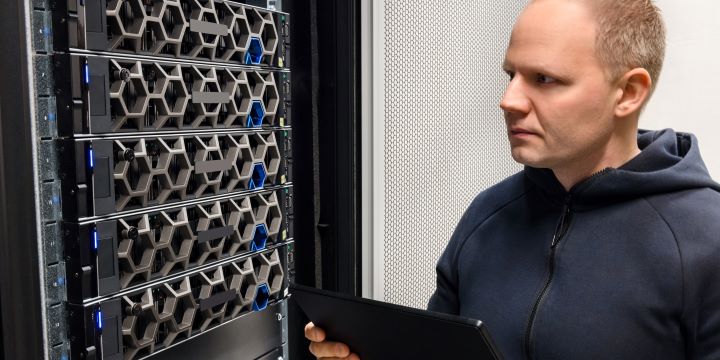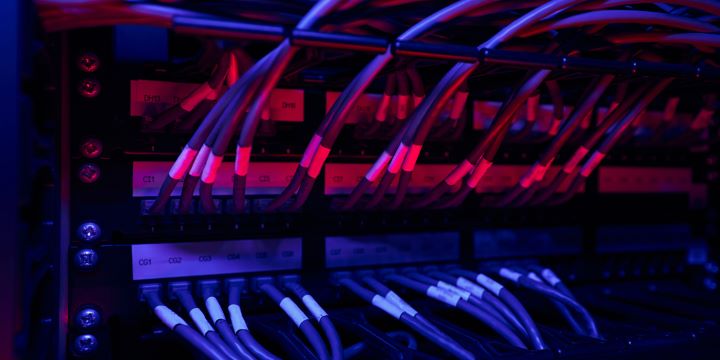Protecting the Future – The Importance of IT Security Systems in Schools

There’s no doubt that schools face a wide range of security threats. From physical threats to cyber attacks, a comprehensive approach is necessary to keep students and staff safe.
Integrated security systems allow school teams to manage all system components via one central management platform. This will enable them to respond quickly to incidents and prevent them from getting out of hand.
Preventing Cyber Attacks
Schools must protect them from cyber attacks that threaten students and staff. Cybercriminals attempt to breach networks at a constant rate and must be stopped before they cause serious problems.
Cyber attacks can be used to gain financial benefit, cause disruption, or steal personal data. All school districts have large amounts of sensitive information and data. This includes student records, teacher contact details, addresses, and other personal information. The data can be sold for substantial sums.
School staff have a high click rate when it comes to phishing emails. They also spend a lot of time online, often using personal devices. These can be compromised with malware, which then spreads and harvests data or malicious code called ransomware.
A cyber attack can also lead to an outage or loss of service, which can disrupt classrooms and students. Districts can mitigate these risks by ensuring they have backup systems, keeping software up to date, and implementing network filters to prevent rogue access.
School districts can also improve their defenses by educating staff, students, and parents on protecting themselves online. Training sessions, workshops, and awareness campaigns can help reduce human error risk. By implementing continuous IT security systems for schools, schools can show their students and families they take cybersecurity seriously.
Ensuring the Security of Data
School data, including student assessment records, healthcare information, and test data, is often sensitive and confidential. These records should be protected against unauthorized access to avoid cyber attacks. This requires that schools take several measures, such as encryption, network segmentation, and strict authentication policies.
Encryption converts text into code that can only be read by authorized parties with the correct key, making it much harder for hackers to access sensitive information. This is an important security measure that should be a part of any school’s cybersecurity strategy. Other methods of protecting data include file-level and database encryption, tokenization of data, homomorphic encryption that enables secure computation, and public critical infrastructures for secure communication.
In addition to implementing encryption, schools should limit access to data by using a need-to-know approach that only allows authorized personnel to view or modify students’ records. This can be achieved by requiring employees to have unique login credentials for data access and by establishing written mandates that guide how staff use student records.
Additionally, schools should consider hosting their technology-based assessment software in their physical infrastructure. This allows them to control where and how the data is stored, reducing reliance on third-party vendors that can be targets for cyberattacks. It also helps to separate data from the public internet, further hiding the attack surface.
Keeping Students Safe
Keeping students safe should always be a priority for school administrators, teachers, and staff. It’s challenging to balance this priority with all the other priorities, clamoring for everyone’s attention. Still, schools can use security systems to make their job easier and keep everyone safe at the same time.
One way to protect students is by implementing high-resolution surveillance systems that consistently provide a full view of the school. This can deter thieves and trespassers from breaking into the school grounds, as they will be visible to anyone looking around. Access control systems are also a great way to keep the school secure at all hours of the day and night, as they ensure that only those with authorized credentials can enter. Combined with an alarm system, the school can instantly send security alerts to staff and first responders when sensors detect unauthorized activities like forced entry.
Finally, schools can encourage a safety culture by offering anonymous reporting channels for anyone to report security concerns. They can also educate the school community about privacy, their rights and responsibilities regarding data use, and how to protect themselves from cyber threats.
Keeping Staff Safe
The presence of security systems can also act as a deterrent for crimes such as theft and vandalism. Schools with CCTV can catch the perpetrators, preventing further damage or injury. Access control systems like ID cards or critical fob entry can protect IT departments and computer labs from unauthorized visitors. Fights, bullying, and generally antisocial behavior can all be prevented if students and teachers know that alarms or CCTV protects the school.
Many schools use a device-based approach to cybersecurity, allowing pupils and staff to bring their devices to the school network. This presents a new set of threats, such as unauthorized access to data and malware infiltration. Crafting meticulous policies, regular training, and fostering a culture of cybersecurity awareness can help mitigate these issues.
The most effective way to keep staff safe when using IT security is to integrate it with physical security measures. This includes partnering with local law enforcement agencies for regular drills and practical tests to ensure the school community is prepared for emergencies. Similarly, using modern security assessments to evaluate the entire campus can help identify any risk areas and reduce overall vulnerability. Schools can use innovative solutions, including smart video surveillance and AI-powered threat detection, to provide the most comprehensive and secure protection possible.












